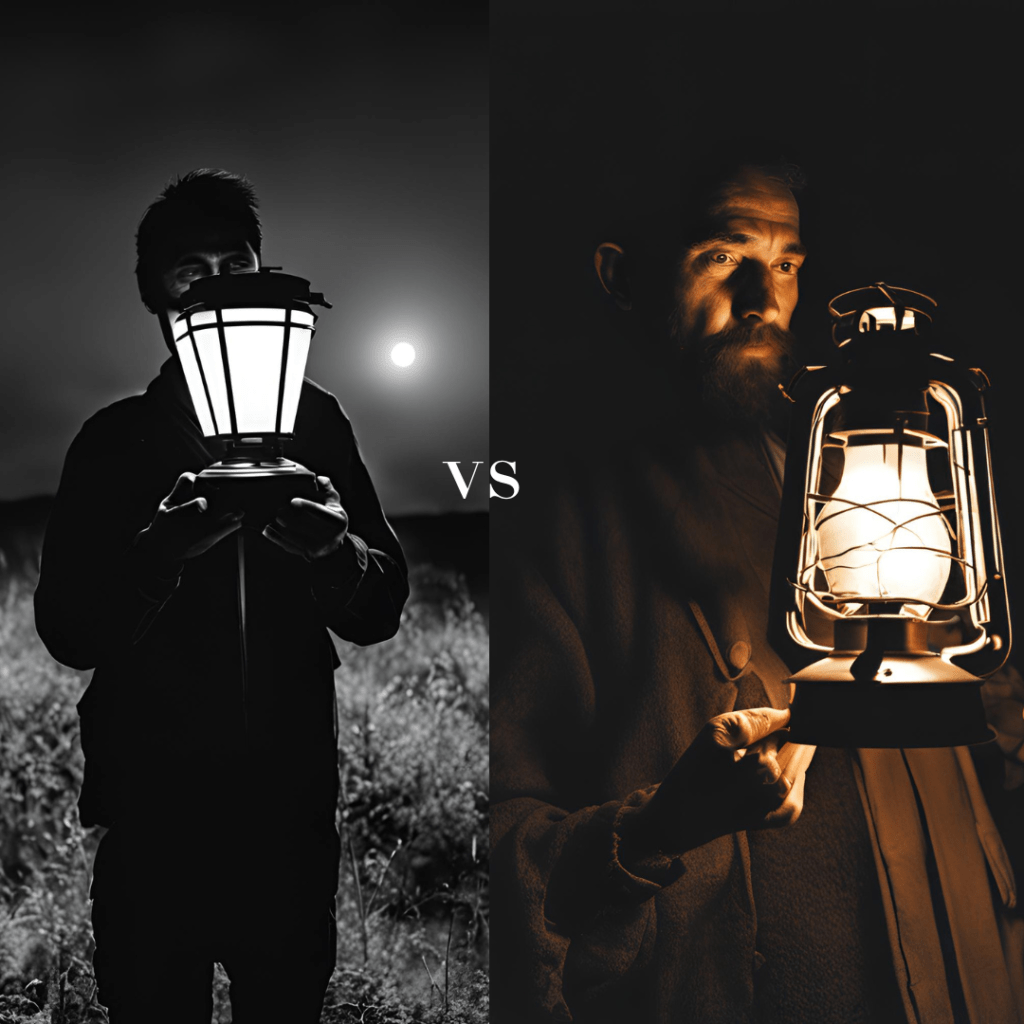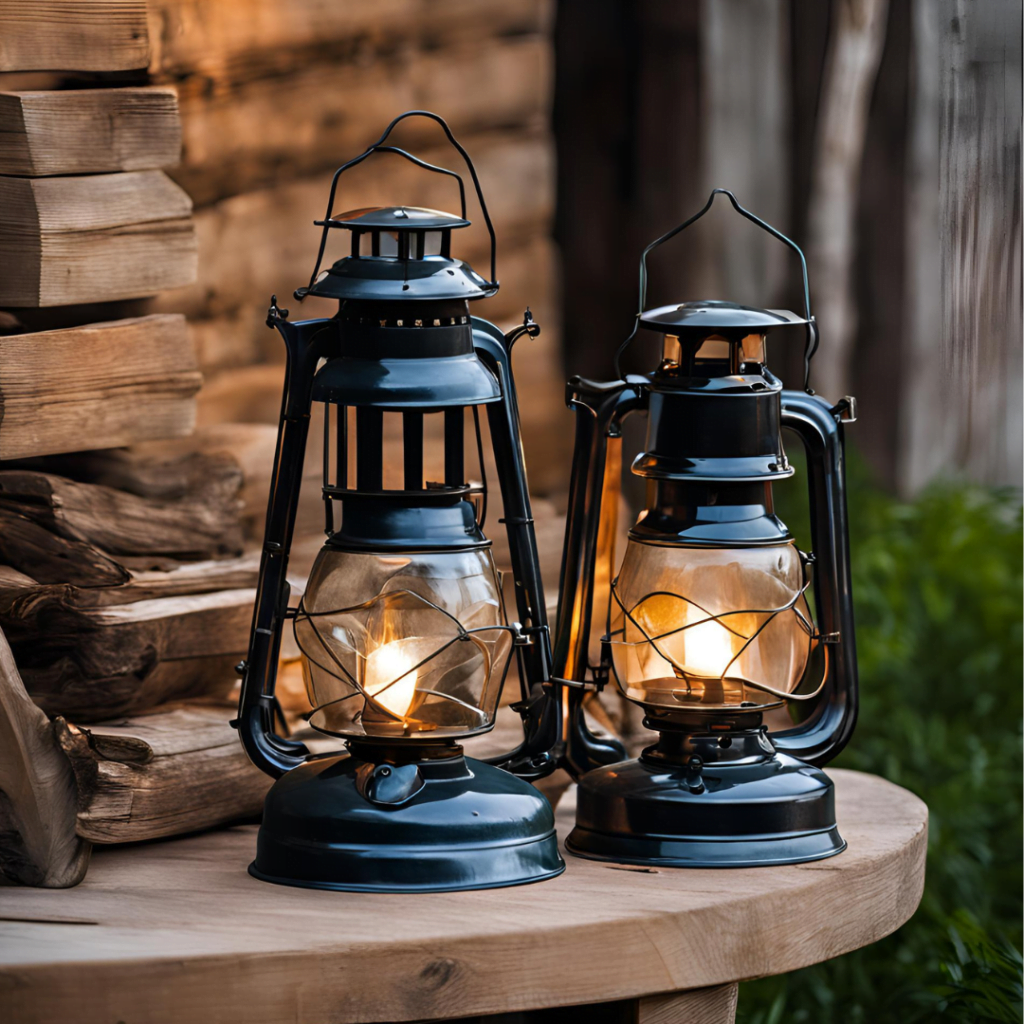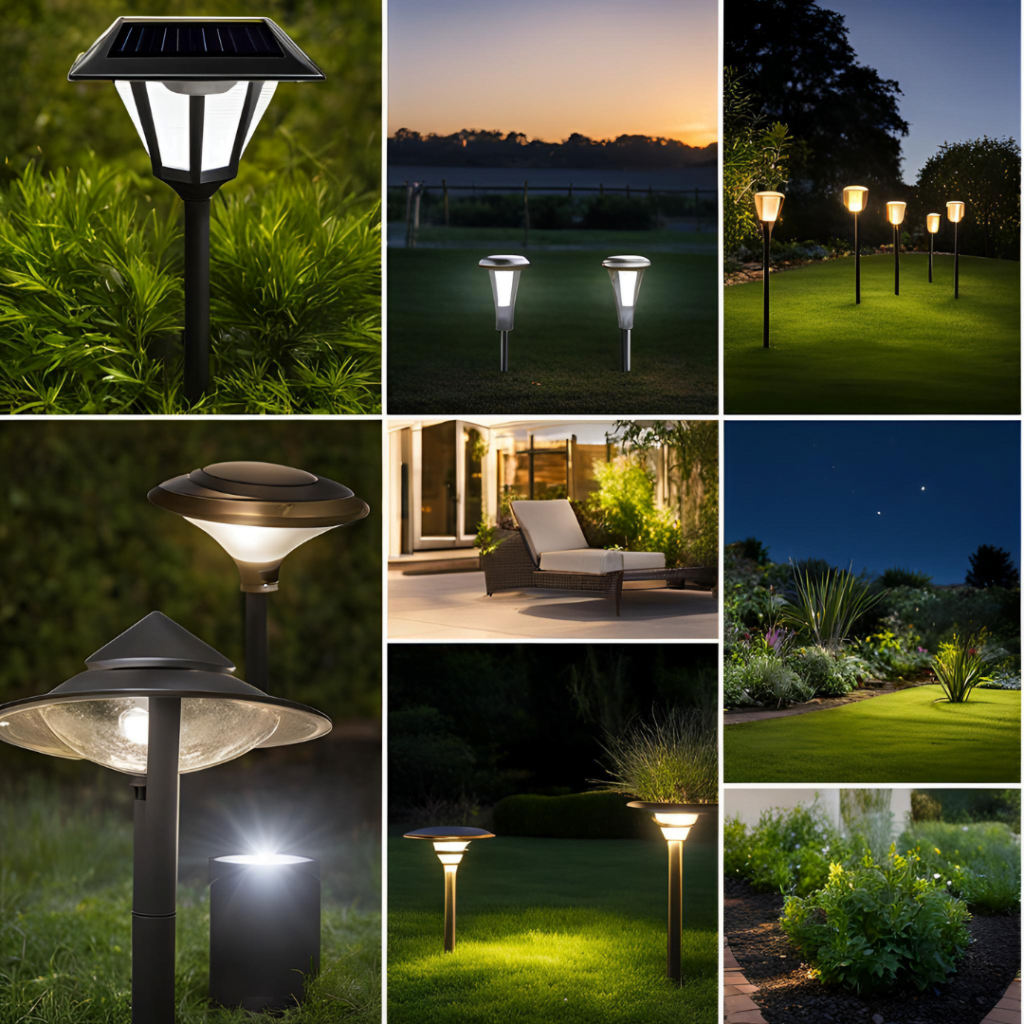Solar Lanterns vs. Traditional Lanterns

In our ever-evolving world, lighting solutions have come a long way from the humble candlestick to advanced illumination technologies. As we progress further into the 21st century, the debate between solar lanterns and traditional lanterns has become increasingly relevant. This comprehensive guide will shed light on the pros and cons of both options, helping you make an informed decision for your lighting needs.
[Affiliate Disclosure: This post contains affiliate links. We will earn a commission if you make a purchase through these links at no additional cost to you.]
1. Introduction to Lanterns
Lanterns have been an essential part of human civilization for centuries, providing portable light sources for various activities. From illuminating paths to creating ambiance, lanterns serve multiple purposes in our daily lives. As technology advances, we find ourselves at a crossroads between traditional lighting methods and innovative solar-powered solutions like solar panels, solar-powered fans, solar powered GPS tracking devices, solar or gas generators, solar cookers, solar water purifiers, solar chargers and other outdoor solar gadgets.
2. Traditional Lanterns: The Classic Choice
Traditional lanterns have stood the test of time, offering reliable illumination for generations. These lanterns typically rely on fossil fuels like kerosene, propane, or battery-powered electric bulbs.
Advantages of Traditional Lanterns:
- Consistent light output
- Not dependent on weather conditions
- Widely available and familiar
- Often more affordable upfront
Disadvantages of Traditional Lanterns:
- Ongoing fuel or battery costs
- Potential fire hazard (for fuel-based lanterns)
- Environmental concerns due to emissions
- Limited portability for some models

3. Solar Lanterns: The Eco-Friendly Alternative
Solar lanterns harness the power of the sun to provide clean, renewable lighting. These innovative devices use photovoltaic cells to convert sunlight into electricity, which is then stored in rechargeable batteries for use when needed.
Advantages of Solar Lanterns:
- Eco-friendly: Zero emissions and renewable energy source
- Cost-effective in the long run (no fuel costs)
- Highly portable and versatile
- Low maintenance requirements
Disadvantages of Solar Lanterns:
- Initial cost may be higher
- Dependent on sunlight for charging
- May have lower light output compared to some traditional lanterns
- Battery capacity can degrade over time

4. Comparing Solar and Traditional Lanterns
To truly understand the differences between solar lanterns and traditional lanterns, let’s break down their key features:
| Feature | Solar Lanterns | Traditional Lanterns |
|---|---|---|
| Energy Source | Sunlight | Fuel or batteries |
| Operating Cost | Low (after initial investment) | Ongoing (fuel or battery replacement) |
| Environmental Impact | Minimal | Higher (emissions, waste) |
| Reliability | Weather-dependent | Consistent (with proper maintenance) |
| Portability | High | Varies (fuel-based less portable) |
| Light Output | Moderate to high (LED) | Varies (generally high) |
| Safety | Very safe | Potential fire hazard (fuel-based) |
| Lifespan | 2-5 years (battery-dependent) | Varies (fuel-based can last longer) |
5. Best Solar Lanterns on the Market
When it comes to choosing the best solar lanterns, several factors come into play, including brightness, battery life, durability, and additional features. Here are some top picks:
- LuminAID PackLite Max 2-in-1 Phone Charger: This inflatable solar lantern doubles as a phone charger, making it perfect for camping and emergencies.
2. MPOWERD Luci Outdoor 2.0: Known for its durability and long-lasting battery, this compact solar lantern is ideal for outdoor adventures.
3. Goal Zero Crush Light: This collapsible solar lantern offers multiple light modes and a long-lasting battery in a lightweight package.
4. Suaoki LED Camping Lantern: With its versatile design and ability to charge via USB or solar power, this lantern is a reliable choice for various situations.
5. Aidier Solar Camping Lantern: This lantern features a built-in power bank and offers 360-degree illumination, making it a versatile option for outdoor enthusiasts.

6. Outdoor Solar Lighting: Beyond Lanterns
While solar lanterns are excellent portable lighting solutions, the world of outdoor solar lighting extends far beyond these handheld devices. Let’s explore some other popular solar-powered lighting options:
Solar Path Lights
These small solar path lights stakes with built-in solar panels and LEDs are perfect for illuminating walkways, gardens, and driveways. They charge during the day and automatically light up at night, providing both safety and aesthetic appeal.
Solar Security Lights
Motion-activated solar security lights offer an eco-friendly way to deter intruders and illuminate your property. They’re easy to install and require no wiring, making them a popular choice for homeowners.
Solar String Lights
Perfect for creating a festive atmosphere, solar string lights can be used to decorate patios, decks, and outdoor events. They come in various styles and colors, adding charm to any outdoor space.
Solar Flood Lights
These powerful solar flood lights are ideal for illuminating large areas such as yards, parking lots, or building exteriors. They offer bright, widespread lighting without the need for electrical wiring.

7. Environmental Impact
One of the most significant advantages of solar lanterns over traditional lanterns is their reduced environmental impact. Let’s delve deeper into this aspect:
Carbon Footprint
Solar lanterns produce zero emissions during operation, unlike fuel-based traditional lanterns that release greenhouse gases. By choosing solar, you’re actively reducing your carbon footprint.
Resource Conservation
Traditional lanterns often rely on non-renewable resources like fossil fuels. Solar lanterns, on the other hand, harness renewable solar energy, helping conserve our planet’s finite resources.
Waste Reduction
While solar lanterns do contain batteries that eventually need replacement, they generate far less waste compared to the constant fuel canisters or disposable batteries required by many traditional lanterns.
Wildlife Protection
Traditional fuel-based lanterns can pose risks to wildlife through potential fires or toxic fume emissions. Solar lanterns eliminate these risks, making them a safer choice for use in natural environments.
8. Cost Analysis
When comparing the costs of solar lanterns vs. traditional lanterns, it’s essential to consider both short-term and long-term expenses:
Initial Investment
- Traditional Lanterns: Generally lower upfront cost
- Solar Lanterns: Higher initial investment
Operating Costs
- Traditional Lanterns: Ongoing expenses for fuel or batteries
- Solar Lanterns: Minimal operating costs (occasional battery replacement)
Long-Term Savings
While solar lanterns may cost more initially, they often prove more cost-effective in the long run due to their low operating costs. The break-even point typically occurs within 1-2 years of regular use.

9. Practical Applications
Both solar and traditional lanterns have their place in various scenarios. Let’s explore some practical applications for each:
Solar Lanterns
- Camping and Hiking: Lightweight and rechargeable, perfect for outdoor adventures
- Emergency Preparedness: Reliable light source during power outages
- Outdoor Events: Create ambient lighting without the need for electrical outlets
- Developing Regions: Provide clean, affordable lighting in areas without reliable electricity
Traditional Lanterns
- Extended Off-Grid Use: More reliable when sunlight is limited
- High-Intensity Lighting: Some models offer brighter output for specific tasks
- Cold Weather Operations: Perform better in extremely low temperatures
- Immediate Use: No charging time required
10. Future of Lighting Technology
As we look towards the future, the lighting industry continues to evolve. Here are some exciting developments on the horizon:
- Improved Solar Cell Efficiency: Advancements in photovoltaic technology will lead to more efficient solar lanterns.
- Enhanced Battery Technology: Longer-lasting, faster-charging batteries will improve the performance of solar lanterns.
- Smart Lighting Integration: Solar lanterns may incorporate smart features like app control and adaptive brightness.
- Innovative Materials: New, more durable and lightweight materials will make solar lanterns even more portable and resilient.
- Hybrid Systems: We may see more lanterns that combine solar power with other renewable energy sources for increased reliability.
11. Conclusion
In the battle of solar lanterns vs. traditional lanterns, there’s no one-size-fits-all answer. The best choice depends on your specific needs, circumstances, and values. Solar lanterns offer an eco-friendly, cost-effective solution for many applications, particularly in outdoor and recreational settings. They align well with the growing global focus on sustainability and renewable energy.
Traditional lanterns, however, still have their place, especially in situations where reliability and consistent high-output lighting are crucial. As technology advances, we can expect the gap between these two options to narrow, with solar lanterns becoming increasingly efficient and versatile.
Ultimately, by understanding the pros and cons of each option, you can make an informed decision that best suits your lighting needs while considering your environmental impact and long-term costs.
12. FAQs
- How long do solar lanterns typically last?
Solar lanterns can last 2-5 years, depending on the quality of the battery and how well they’re maintained. - Can solar lanterns work indoors?
Yes, but they need access to sunlight to charge. Place them near a window or bring them outdoors periodically to recharge. - Are solar lanterns bright enough for reading?
Many modern solar lanterns provide sufficient light for reading, especially those with multiple brightness settings. - How long does it take to charge a solar lantern?
Charging time varies, but most solar lanterns require 6-8 hours of direct sunlight for a full charge. - Can I replace the batteries in a solar lantern?
Some models allow for battery replacement, while others are sealed units. Check the manufacturer’s specifications for your specific lantern.
This comprehensive guide should provide readers with a thorough understanding of the solar lanterns vs. traditional lanterns debate.




Nice you took out my curiosity